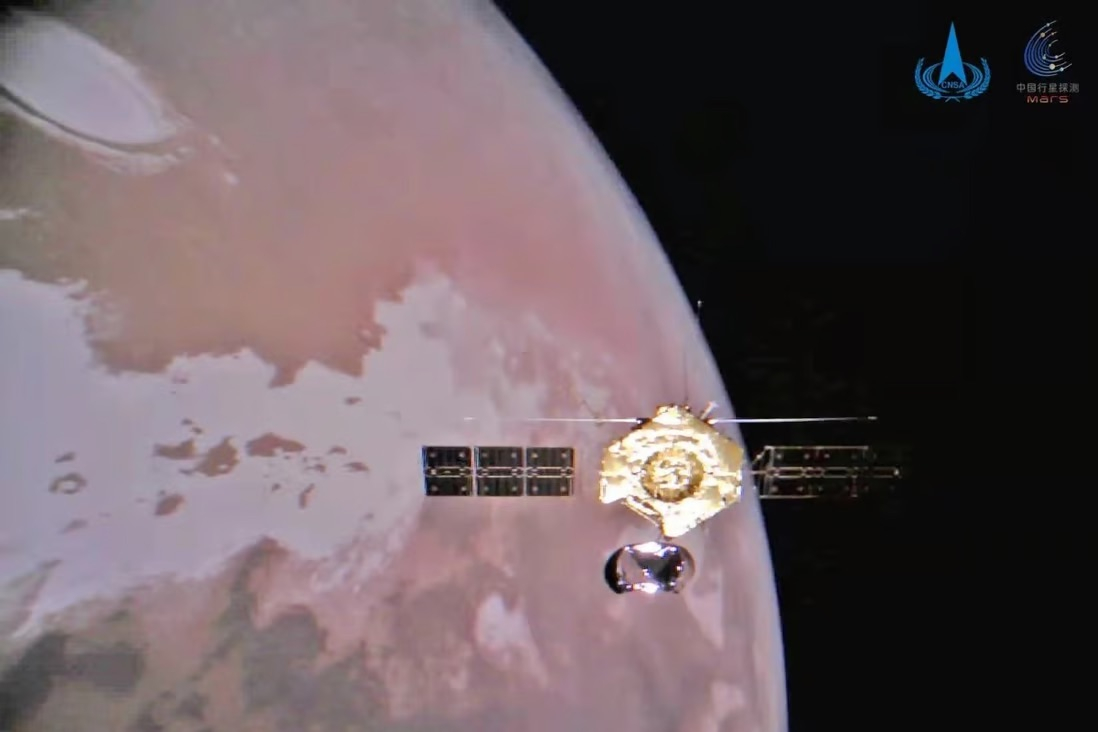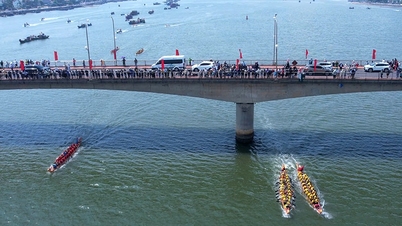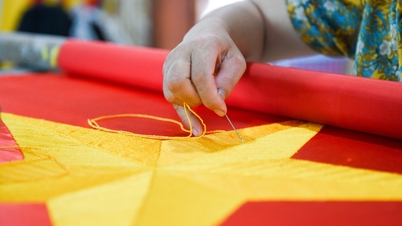According to the China National Space Administration (CNSA), the panoramic images were compiled from 14,757 photos taken by the Tianwen-1 orbiter's medium-resolution imaging camera from November 2021 to July 2022.

The Tianwen-1 spacecraft took off from Hainan island province in July 2020. Photo: Xinhua
The maps will add to our knowledge of the red planet and improve planning for future missions, including China's Tianwen-3 mission, the CNSA said during a ceremony marking China's Space Day in the city of Hefei.
The images also helped scientists identify many geographic features near the landing site, 22 of which have been named by the International Astronomical Union after places in China.
Tianwen-1 lifted off from the southern island of Hainan in July 2020, marking the start of China's first interplanetary mission. After entering Mars' orbit in February 2021, the spacecraft took photos of pre-selected landing sites in Utopia Planitia, a vast plain, and successfully landed the lander and rover three months later.
By the end of June 2022, the Tianwen-1 orbiter had orbited Mars 1,344 times. It also supported data relay between the Zhurong rover and Earth and conducted global remote sensing surveys of Mars in lower orbit.
The solar-powered Zhurong rover spent a year traveling a total of 1,921 meters on the surface of Mars before entering hibernation due to the cold winter in May 2022. Zhurong remained dormant after failing to wake up as expected earlier this year when spring arrived on Mars, according to China Space Daily.
During a public talk in Beijing on April 15, the rover's chief designer Jia Yang noted that “we cannot rule out the possibility that Zhurong will never return.”
The Tianwen-3 mission, scheduled to launch around 2030, aims to bring back at least 500 grams of rocks from the Martian surface by scooping, drilling and remotely sampling, according to the mission's chief designer Liu Jizhong.
Mai Van (according to SCMP)
Source




































































































Comment (0)